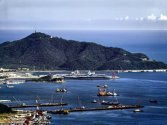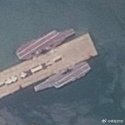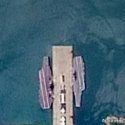You are using an out of date browser. It may not display this or other websites correctly.
You should upgrade or use an alternative browser.
You should upgrade or use an alternative browser.
CV-18 Fujian/003 CATOBAR carrier thread
- Thread starter Jeff Head
- Start date
If its about to be comissioned and after releasing an ops video, it doesn't make sense for them to be mockups.Wonder if those planes are operational or mock-ups?
The paper that I quoted did not explicitly says that flywheel is used for EM cat. BUT, it is a common sense in engineering. The table in the paper made it clear that flywheel is the only option that can provide the power level (highlighted in purple) for EM cat.The text posted by taxiya didn’t specifically said flywheels were used in 马伟明’s system.
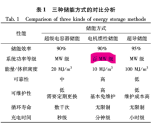
In another paper, Ma Weiming explicitly stated that it is flywheel. Highlighted in purple.
Translation:
One application is ship borne aircraft launch...... one focus of research is to develop high power density, how energy density Inertial energy storage
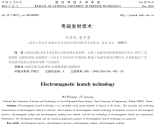
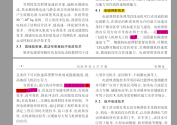
A 125kwh flywheel system used by a coal fire power plant can be seen in this video.
The spinning wheel weights 10 tons. It can be seen at 19:50. Vibration can be catastrophic.
The flywheel in EM cat is very very light, in the hundreds KGs. You don't need weight to store certain amount of energy, spinning the wheel in thousands RPM does the same job.
With ships constantly bobbing up and down, left and right, I don’t see how flywheels can be used on ships. Even if they are placed on a balance board, the ship may drop vertically if it hits a large wave.
The eletric generator, drive motor, gas turbine, steam turbine on a ship spins in the same range of RPM and weighs heavier, their inertial energy/force are on the same level as flywheel. Flywheel has nothing special in this regards.
Super capacitors are at least plausible.
Pseudocapacitors can get 10 Wh/kg in density and 10 W/g in power.
Accelerating a 30 ton object to 150 knots requires 0.5*30000*77^2 = 89 megajoules of energy, round up to 90 MJ.
90MJ/36000(J/kg) = 2500 kg. This should also be able to discharge at 25 MW, so you can transfer a total of 90 MJ of energy in under 4 seconds.
So a 2.5 ton super capacitor could theoretically power an EM cat. Probably similar in weight to an equivalent 90MJ (25 kwh) flywheel + support system, but solid state and much more reliable.
Not to say that's what's actually being used, but it's plausible.
I'm no electrical engineer, but from what little I understand it's not just a matter of energy or power density, since linear induction motors require AC power by principle. Capacitors or batteries discharge DC current, and inverters capable of converting from DC to AC the required 25-30MW instantaneous power are probably quite large, heavy and impractical (assuming they even exist), more so than a flywheel-based solution. Someone experienced in this field can probably educate us on this. If it were merely a matter of energy / power density, the required power (25-30MW for ~4 secs) can easily be met by even reasonably sized LFP battery packs that would be able to continuously power multiple launches without needing to recharge.
I am otherwise not an expert and am not invested in the idea of Fujian using either energy storage system but there's 2 data points:If you want to doubt the word of Yankee and co. then be my guest, but his record is a lot stronger than yours.
1. The physics are there for heavy high RPM spinning objects. Steam turbines spin at typically ~2k RPM range, flywheels at up to 60k RPM. Even the US has recognized naval flywheels as an engineering challenge as late as 2022. The engineering and reliability challenges of the catapult on the Ford are well known.
2. In 2023, Ma Weiming specifically mentioned capacitors (电容器) applied to naval EM launch technologies 15+ times but only mentioning a foreign (Japanese) flywheel (惯性储能) once as a comparison.
The above is a copy of his original article.
The flywheel system has less tolerance for unbalance if the flywheel spins at higher RPM.The flywheel in EM cat is very very light, in the hundreds KGs. You don't need weight to store certain amount of energy, spinning the wheel in thousands RPM does the same job.
The US EMLS' problem was never the root cause of its trouble, it is the AC archetect. Flywheel isn't the only thing in the system, American does not always make mistakes on everything.I am otherwise not an expert and am not invested in the idea of Fujian using either energy storage system but there's 2 data points:
1. The physics are there for heavy high RPM spinning objects. Steam turbines spin at typically ~2k RPM range, flywheels at up to 60k RPM. Even the US has recognized naval flywheels as an engineering challenge as late as 2022. The engineering and reliability challenges of the catapult on the Ford are well known.
The bottom line is that nothing be it capacitor or battery has the energy and power desity as flywheel to work for catapult. Capacitor has a the highest power density but lowest energy desity, battery goes to the other extreme, only flywheel stands on the right middle ground. It is not about who can do it, but limitation of today's technology.
That paper 电磁发射技术的研究现状与挑战 talked about three types of EM 发射 tech. It is important to note and it is distinctively stated in the paper that 发射 includes three types of application, 弹射 (hundres meter range), 轨道炮 (railgun tens of meters) and 推射 (thousand meters, such as rocket acceleration), . All of the three are 发射 which can be translated into English as launch. But in Chinese only 弹射 is catapult launch for the CV. 发射 is used as a umbrella term to include any EM accelerating tech.2. In 2023, Ma Weiming specifically mentioned capacitors (电容器) applied to naval EM launch technologies 15+ times but only mentioning a foreign (Japanese) flywheel (惯性储能) once as a comparison.
The above is a copy of his original article.
Ultimately in the paper (2016) by Ma Weiming, EM cat's key tech is Inertial energy storage, AKA 电机储能 (eletric motor storage), AKA flywheel. So regardless where people come from, Ma's EM cat uses flywheel as far as we are informed.
Last edited:

